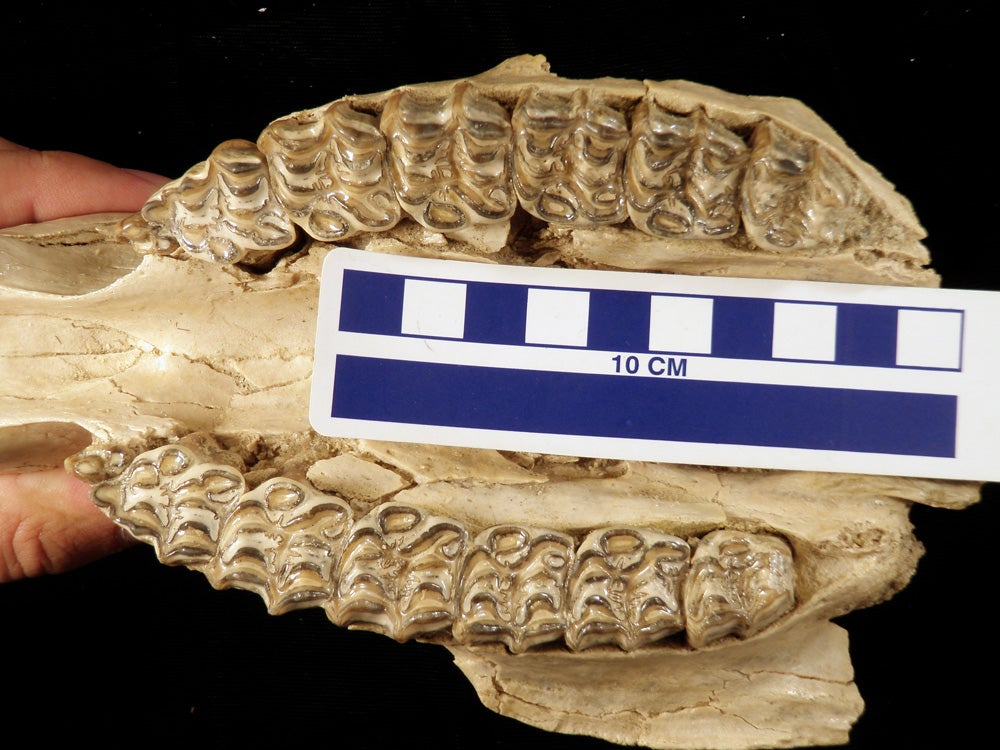Environmental changes likely explain the difference in tooth enamel of four horse groups living 16 million years ago compared to the lone surviving group of modern horses, say University of Oregon researchers Nicholas A. Famoso and Edward Byrd Davis.
In a study published in the open-access journal PLOS ONE, a publication of the non-profit Public Library of Science, the two paleontologists suggest the patterns of enamel on the chewing surfaces evolved as horses turned to eating gritty materials in a cooling and drying climate.
Using a numerical method – the occlusal enamel index – that measures the complexity of enamel patterns, Famoso and Davis compared the molars and pre-molars from four groups of horses that had lived between the middle Miocene and today. Each group was distinct in the patterns of enamel on chewing surfaces. The patterns, the researchers say, influence the ability of a horse to process food during chewing.
 Famoso, a doctoral student in the UO Department of Geological Sciences, and Davis, his adviser in the department and a scientist with the UO Museum of Natural and Cultural History, also used statistical methods to test whether horse teeth increase in complexity in response to an increase in gritty materials in their diet, leading to more tooth abrasion over time.
Famoso, a doctoral student in the UO Department of Geological Sciences, and Davis, his adviser in the department and a scientist with the UO Museum of Natural and Cultural History, also used statistical methods to test whether horse teeth increase in complexity in response to an increase in gritty materials in their diet, leading to more tooth abrasion over time.
Results suggest that the shape of the enamel patterns was influenced by a combination of climate change and diet, as well as evolutionary relationships and tooth position.
"The patterns of enamel on the chewing surfaces of middle Miocene to modern horses increases as we would expect in response to increased grit in the diet," Famoso said. "Modern horses have much lower enamel complexity than their North American ancestors, likely because modern horses are bred from Old World stock where they were under different selective pressures, and are not native to North America."
- by Jim Barlow, UO Office of Public Affairs Communications

